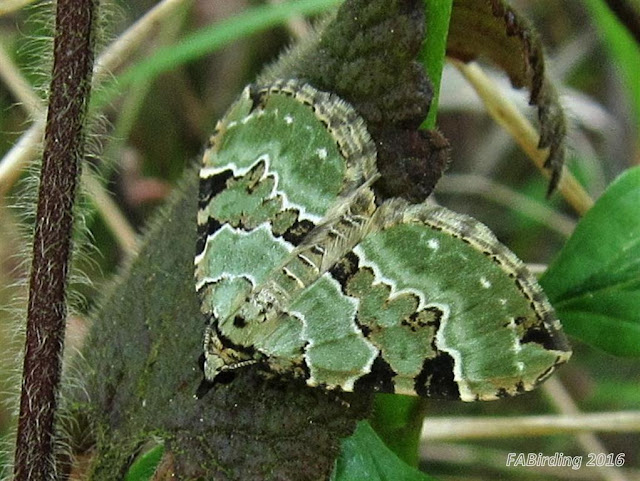Another boardwalk trail that I like to wander is located at the
Riverside Country Park just over a 30 minute drive from home. The start of my leisurely stroll takes me a short distance alongside the River Wey Navigation where I watched a Common Buzzard being harried by Crows before stepping onto the first stretch of boards leading over stagnant water in a small woodland.
Depending on the time of day and the wind direction the road noise from the adjacent A3 can be quite overpowering so the ears have to work a bit harder to pick out the calls of the resident birds.
On this occasion it was the usual suspects; Robin, Blue Tit, Great Tit, Long-tailed Tit, Wren, Song Thrush plus the intermittent song of a Blackcap.
As I walked towards the main lake I saw a number of male Orange Tip butterflies patrolling the grassland but non of them stopped for a photo call!
The main lake didn't hold much of interest just Coot, Canada Geese, Mallard and Moorhen so I turned onto the main boardwalk that crosses the marsh and immediately picked up the scratchy sounds of a Sedge Warbler, typically hidden from view, and parked myself on one of the highly carved seats.
A little time here enabled a few distant shots of a male Reed Bunting (below) singing while endeavouring to maintain its balance on a flimsy perch in the gusty breeze.
One arm of the boardwalk leads into the damp woodland where there is a curved screen with portholes overlooking a small area of open water. Unsurprisingly parts of the hide screen have already been vandalised plus there was recent evidence of a fire on the floor!
You can view an article in
The Guildford Dragon News which has images of the original boardwalk and hide construction completed in May 2013 at at exorbitant cost of £210,000 but at least it means you don't have to wear waders to cross the marsh!
A Mute Swan (above) drifted in and then out of view followed shortly after by Mrs Mallard with seven youngsters in tow who spent some minutes paddling in and out of the shadows beneath the boardwalk.
Following the boardwalk again past clumps of Marsh Marigold towards the Wey Navigation I logged a lot more very active Orange Tips, plus one Peacock butterfly before crossing the bridge to sit awhile at Stoke Lock and watch the peacefully slow activity on the waterway.
A Grey Wagtail was extremely busy catching and carrying insects to a nearby nest. Retracing my steps I listened to Chiffchaff and Common Whitethroat while being serenaded by a Robin.
Linking to:
Good Fences
Saturday's Critters





















































